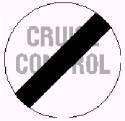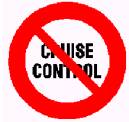- December1988: Marrinder, P., Granery, J.: Investigation of Sudden Acceleration Incidents. Transport of Canada File ASF3282-8-18. Defect Investigation Division, Road Safety and Motor Vehicle Regulation Directorate, Transport Canada, Ottawas, Ontario - KLA 0N5 Abstract: "Sudden Acceleration" is a phenomenon which has received considerable attention during the past several years. For the purposes of this report "Sudden Acceleration" (S.A.) is defined as an incident conforming to the following pattern: 1) vehicle's automatic transmission is in the "park" or neutral position; 2) vehicle is started by the driver or is at idle; 3) driver shifts from "park" or "neutral" to "reverse" or "drive"; 4) vehicle accelerates rapidly, apparently without driver input; and 5) brakes are reported to be ineffective. The report discusses the history of various government bodies' involvement in the investigation of such incidents, the results of studies and investigations, and the present position of governments and manufacturers concerning these incidents.
9.3.5 SUDDEN ACCELERATION IN JAPAN
- April 1989 : Sudden Starting and Acceleration in
Automatic Vehicles Traffic
Safety and Nuisance Research Institute, Japanese
Ministry of Transport.. A report prepared to
disseminate the results of the "Investigation into vehicle
configuration and equipment to determine the cause of sudden starting
and acceleration in automatic transmission equipped vehicles,"
an investigation performed in 1987 and 1988 at the request of the
Director-General of the Regional Transport Bureau, Ministry of
Transport.
- March 1988 : Sudden Starting and Acceleration in Automatic Transmission Vehicles. Traffic Safety and Nuisance Research Institute, Japanese Ministry of Transport. An interim report to disseminate the results of the 1987 continuation of the "Investigation into vehicle configuration and equipment to determine the cause of sudden starting and acceleration in automatic transmission equipped vehicles," an investigation performed at the request of the Director-General of the Regional Transport Bureau, Ministry of Transport.
- Safety Research Report Index - Japanese Sudden
Acceleration [References up until 1994] http://www.autosafety.org/srr/SAJAPAN.pdf
- March 28 2004: Sudden Acceleration' Claim Dismissed [GM Daewoo] By Byun Duk-kunStaff Reporter The Supreme Court of Korea, the nation’s highest court, on Sunday dismissed a claim leveled by a parking facility employee that a mechanical failure in a vehicle produced by a local carmaker led to a sudden acceleration and then to an accident.The ruling was the first of its kind by the Supreme Court on claims regarding rapid acceleration of vehicles. It is expected to have an enormous impact on a number of similar suits at lower courts. http://times.hankooki.com/lpage/nation/200403/kt2004032817442011980.htm
- Oct 9 1999 : Sudden Acceleration Accident - Some Theory from Korea. Yu-Sung Chang (changyu@CIMS.NYU.EDU) Sat, 9 Oct 1999 07:13:32 -0400 (EDT). Recently, there've been a lot of Sudden Acceleration accident in Korea. A TV station (SBS, Seoul Broadcasting System) got a clue of these accidents, and they broadcasted it nationwidely. http://www.tarorigin.com/ARnews/ARnews6-99/0191.html [There are further postings on this thread]
- June 1, 1999 Essay No. : 99-20 Car Acceleration Accidents and Product Liability . O-Seong Kweon Director of Public Policy Div. at CFE Used to be available at http://www.cfe.org/english/major/essay_9920.htm
9.3.7 SUDDEN ACCELERATION IN EUROPE
9.3.7.1 EUROPE - GENERAL
- Safety Research Report Index - European Sudden Acceleration [References up until 1994]: http://www.autosafety.org/srr/SAEURO.pdf
- Gunnerhed,
M. Risk Assessment of Cruise Control FOA Report E 30010-3.3 May
1988 ISSN 0281-9937 Swedish Defence Research Establishment.
| 9.3.7.2 SUDDEN
ACCELERATION IN BELGIUM
May 1st 2004
Restrictions on use
of
cruise control is introduced on sections of some Belgian motorways to reduce accidents. http://www.aee.be/fr/news.htm
January 25 2005 Auto Express: Cruise Control Banned! BACK TO TOP OF PAGE |
The use of cruise
control is forbidden
from this route sign onwards until the next junction. |
 End of Cruise Control restriction. |
Oct 3 2004: The "Vel Satis folle"
incident. On the night of Sunday Oct 3rd 2004, Hicham Draa
was
driving home on autoroute A74 in his Renault Vel Satis automatic,
fitted
with an electronic throttle and speed control. According to press
reports, he had set his speed control at 130 km/hr and had covered a
distance of about 30 km and was near Vierzon when he accelerated to
overtake a lorry. The vehicle continued to accelerate to about 190
km/hr. He found himself unable to brake or cut off the engine. He
alerted the police at Vierzon by mobile telephone who in turn warned
their colleagues at Allier.
After covering 150 km, Draa finally managed to remove the smart
card
(used instead of a key) from the dashboard and switch off the engine:
bringing the vehicle to a halt about 20 km from the toll barrier at
Combronde. The police, fearing that he would be unable to stop at the
toll barrier, took precautions: they evacuated toll cabins
personnel, raised the toll barriers, illuminated the arrows used to
direct exceptional convoys so that other drivers remained stopped
in the emergency stopping lane and firemen and
paramedics were put on standby at the toll barrier. Since then, there
have been many other incidents of blocked speed regulators in france
see TF1.fr dossier
on speed regulators
Also: Video
Clips 'Regulateur de vitesse: France 2
- Association de Défense des Victimes de l' Electronique Automobile http://www.victimes-electronique-auto.org/
- l’objet statutaire:"de défendre les droits ainsi que les intérêts matériels et moraux, tant collectifs qu’individuels, des conducteurs et passagers des véhicules automobiles ayant été l’objet de pannes de l’un quelconque de leurs systèmes électroniques installés à bord (air-bag, régulateur ou limiteur de vitesse etc....), que lesdites pannes aient ou non engendré, directement ou indirectement, un accident de la circulation."
- Statutory object: "to defend the rights and equally the material and moral interests, whether collective or individual, of drivers and passengers of automobile vehicles that have been the object of breakdowns of any one of their electronic systems installed on board (air-bag, speed regulator or speed limiter etc), whether the aforementioned breakdowns have or have not generated, directly or indirectly, a traffic accident."
BACK TO TOP OF PAGE
